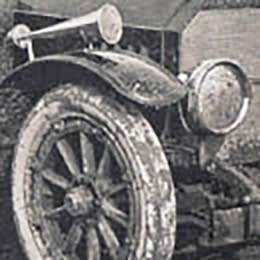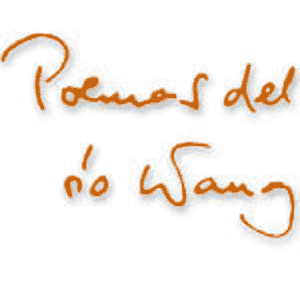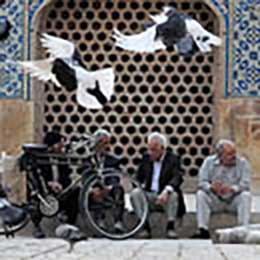
Name of the sender: Károly Timó, 1st Infantry Regiment, 5th Battalion
Address of the sender: Francis Joseph Barracks, Kecskemét, Reservespital Nr. 9, Door 88
Address: To the honored Miss Antónia Zajác
3rd district, Kis-Korona Street 52
Budapest

My dear son
I write you these few lines in the hope to get an answer, because now I am near Pest, that is, to you. I was so annoyed that I was not sent to a hospital in Pest, but in Kecskemét, and I will stay here until I get fully recovered.
How do you feel, my son, are you healthy? and your mother and sisters? What’s the news about Feri?
I feel pretty good, in comparison to the wound.
My son, I asked for some money from home, because I cannot even buy cigarettes. In case they do not receive my postcard, tell it to them, but for sure, because I am looking forward to it, with the returning post.
What’s the news otherwise in Pest?
In about two weeks I will be back home. Be patient.
Kisses and embraces from your loving Károly
My greetings to the people in the workshop.
[So that was it. It was not even a month ago that, just recovered from the first wound, he was commanded back to the front. Now he was wounded a second time. Protected by the caul of his good luck, now he avoided the fatal bullet for the second time.
The höfers only give a general and brief description of the battles in the Carpathians. We can only infer when and where he was wounded. His postcard written on 11 January makes no reference to an impending cataclysm.
Counting back, it was at least one day that he got to the temporary field hospital set up in the Francis Joseph Barracks of Kecskemét. The same time was necessary for a train to carry wounded soldiers from the Carpathians to the great plains. And then the field ambulance and filter station, where – if they observed the rules – he had to wait five days. This was the prescribed time to separate the soldiers carrying infectious diseases from the healthy wounded. It can thus be assumed, that he could consider himself a lucky victim of the first act of the first Carpathian campaign launched after the severe winter (23 Jan – 20 Feb 1915), the Czeremcha-Nagycsertész battle.
The starting position is roughly delineated in the repeatedly cited memorial book of the regiment:
“During the fights of 1914, the Austrian-Hungarian army was so much cut back, that at the beginning of 1915 there were only 270 thousand weapons employed on the whole Russian theater of war, while the Russians had 400 thousand people alone in the Carpathians fighting against our 180 thousand soldiers. This situation had to be reckoned with in time, because our armies could not resist for long to a three- or fourfold superior force in a passive defense. Thus our military leadership intended to paralyze the Russian forces by way of a large-scale attack launched together with the Germans, so that the latter attacked the Russian right wing from the north in Eastern Prussia, while the Austrian-Hungarian forces the left wing from the south in the Carpathians. These measures led to the famous Masurian Campaign on the German side, and to the Carpathian Winter Campaign at our side.”
 “…on 23 January at 7 a.m. our regiment with four battalions and three machine-gun squads develops for an offensive at the northern edge of Nagycsertész, according to the allocated fighting range,with a view of the occupation of altitude Nr. 651 possessed by the enemy…”
“…on 23 January at 7 a.m. our regiment with four battalions and three machine-gun squads develops for an offensive at the northern edge of Nagycsertész, according to the allocated fighting range,with a view of the occupation of altitude Nr. 651 possessed by the enemy…”So that “…the kind reader could sufficiently appreciate the excellent performance of the soldiers of the 1st Regiment in the battles fought on the basis of the above dispositions, we have to know about the ground features,, that the whole area had a permanent increase of 30% up to the Russian positions, and in the allocated fighting range there was a sparse pine forest only on the right wing, while the rest of the field was completely open, covered only at some spots with a few shrubs.
The whole area was covered with 50 cm high snow, and cold sunk to -28 °C.”
The attack launched on 23 January “…was launched again on 24, but it could advance only 150-200 meters, because the machine guns cannot support the advancing troops, as the coolers of the machine guns freeze in the great cold. The gunfire of the enemy causes a lot of loss on this day…
…In the night, only black coffee, mulled wine, bread and ammunition could be brought to the front line. In the night to 25, snowing was so strong, that the whole front line of the regiment was covered by snow, and the dead -- as they could not be brought down because of the strong gunfire of the enemy – were spread over by a white shroud by the thick snow of the Carpathians.”]
When, in the bleak wrestle, he was shot by a sniper of the Siberian Infantry Regiment, Károly Timó somehow survived. He was carried down the mountain, his wound was cured in the camp conditions, and then he was delivered by train to Kecskemét. As to how, the civilians could make themselves a creepy idea from the books on military surgery by József PROCHOV and Elemér PAULIKOVICS.
What is the hole of a bullet like, which goes in on one side and comes out on the other? Or when it goes through the skull?
For the time being, speculations and doubts remain about Károly’s condition. If his hopes will come true, and he will get to Budapest, then at least these uncertainties will be dispersed, whatever lays in the future for his beloved ones, friends and colleagues in Óbuda.]
 Rusian graves near Nagycsertész. From Kornél Divald’s report of 1915.
Rusian graves near Nagycsertész. From Kornél Divald’s report of 1915.



































Add comment